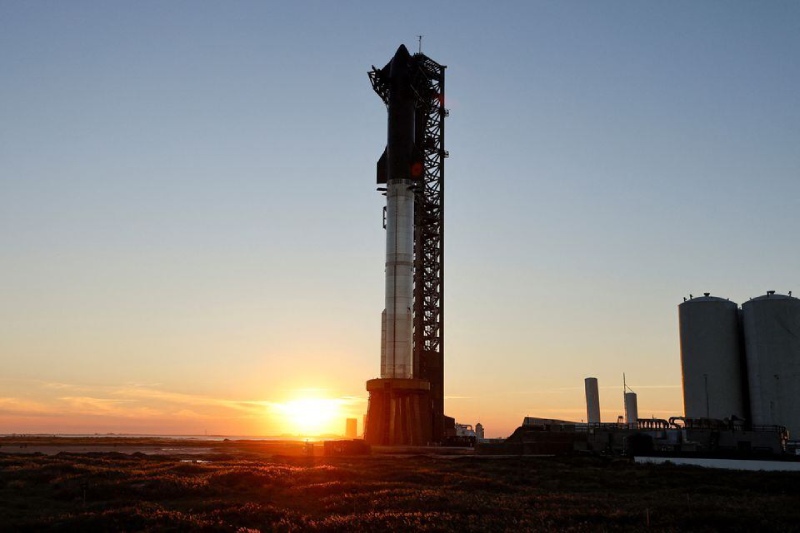Major Test by SpaceX Conducted in Texas Before Third Flight Test of Starship

SpaceX is busy conducting last-minute tests at its Boca Chica, Texas, facilities in preparation for the third Starship test flight, which is presently scheduled to occur next week. SpaceX is looking forward to the third Starship launch more than anything else this year since it will be the company’s third attempt to launch the biggest rocket in history. The first and second stages of the Starship test were successfully separated in November. To enable the rocket’s quick testing—which is essential to its future—SpaceX upgraded its rocket and constructed a new launch pad for the third test attempt.
Before the Third Starship Test Flight, SpaceX Evaluates the Launch Site Deluge System
SpaceX has been hard at work modifying its rocket in anticipation of the significant missions after revealing earlier this week that the third Starship test flight is scheduled for March 14. The starship already has explosives fitted on the rocket to destroy itself in the event of an anomaly, or a flight abort mechanism.
The water deluge system was also tested by SpaceX at the launch site with the first and second stages stacked, according to video obtained by local media. One of the most crucial components of the launch pad in the Starship program is this system. Due to it, SpaceX was only able to conduct two Starship tests last year, which was the main reason for the multi-month delay that occurred between the second and third test flights in 2023.
Based on the video, it appears that the test went well, enabling SpaceX to mark off another task on its pre-launch checklist. In order to feel confident about launching, engineers must conduct a number of tests, including static fires and tank pressure checks.
SpaceX also performed a wet dress rehearsal of Starship prior to the deluge system test in order to fully load it with fuel and reduce the countdown timer to a few seconds before launch. But the ensuing stacking took longer than anticipated when it unstacked the second stage Starship spacecraft from the Super Heavy rocket. After prior modifications to the launch tower that also covered the “chopsticks” that hoist the second stage Starship on the booster, SpaceX required around three hours to stack the rocket.
SpaceX has upgraded the Starship rocket in a number of ways before the third test. One of these is an upgraded engine control system for the spaceship in the upper stages. The Starship second stage uses its engines to shift itself around while in flight. SpaceX claims that future Starships will have an electronic thrust vector control system for their engines in addition to the gimballing system now in use.
Upgrading the rocket’s fire impression system, eliminating internal leaks, and further lowering the likelihood of fires through the electronic TVC are among the other modifications. To lower the possibility of contaminants entering the engines, the Super Heavy has modifications inside the tanks. SpaceX claims that the November rocket explosion’s “most likely root cause” was inadequate filtration.
The first starship to reach space was the second stage, which stage split successfully in November. After the rocket reached a height of 150 kilometers, its flight termination system destroyed it. SpaceX will also test in-space propellant transfer for NASA’s Moon lander missions as part of future Starship testing.